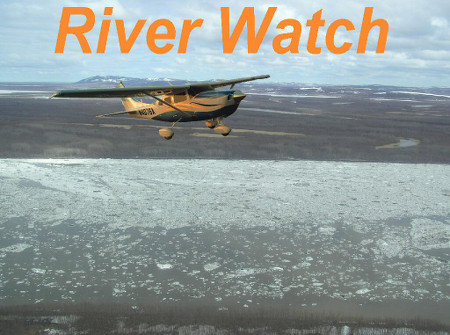Current PIREP Areas of Interest
National Weather Service (NWS) is responsible for monitoring ice breakup conditions throughout Alaska to assess flood threats and navigational hazards. Ground observations, aerial reconnaissance, and remote sensing are sources used to assess ice conditions. Although ice jam flooding is most common during the ice breakup season, ice condition reports are welcome during freezeup and mid-winter as well.
We have relied for many years on observations of Alaska village residents describing the river ice condition in front of the village. Supplemental aerial observations from aircraft flying at low to mid-level altitudes have significantly enhanced the information on ice conditions. Since ice conditions can vary significantly along a river and can change rapidly during the breakup process, numerous observations are needed statewide to assess the status of breakup. It must be stressed that we are looking for reliable and objective reports.
The River Watch Program is a voluntary program that is...
River and lake ice observations can be provided to the Alaska-Pacific River Forecast Center (APRFC) via:
Additional information about the program and tools to download are available at the following links:
Program background:
Training materials:
Results:
Many thanks to the FSS, other partner agencies, commercial and private pilots, and village residents for their river ice observations during the ice breakup seasons.

| PRE-BREAKUP |
|---|
|
| ICE JAM CONDITIONS |
|
| MOVING ICE |
|
| POST-BREAKUP |
|